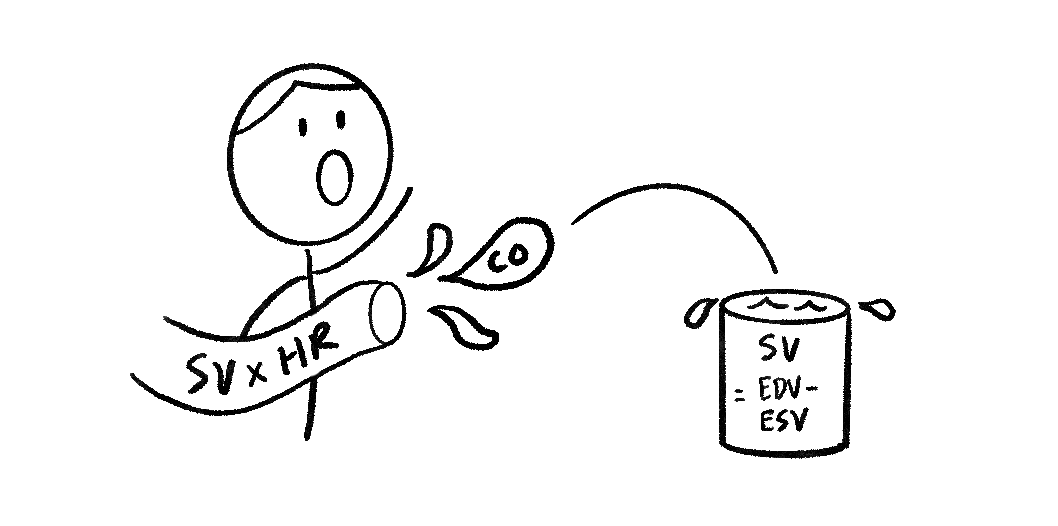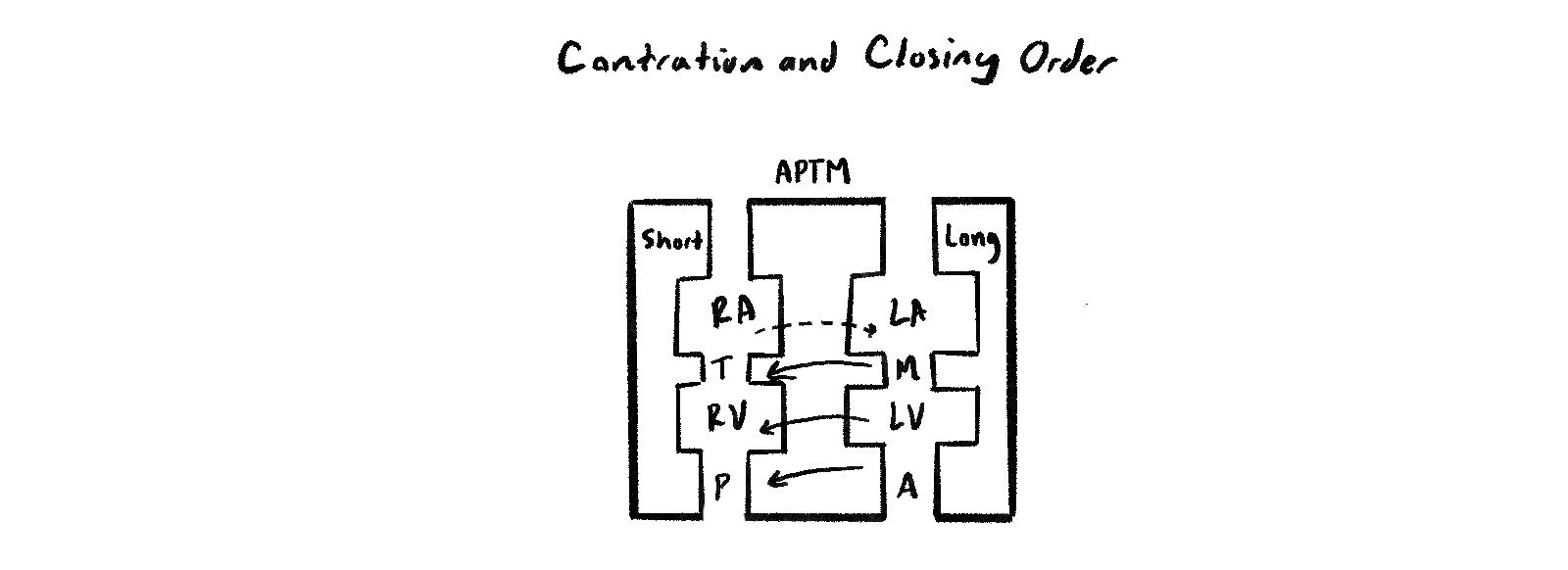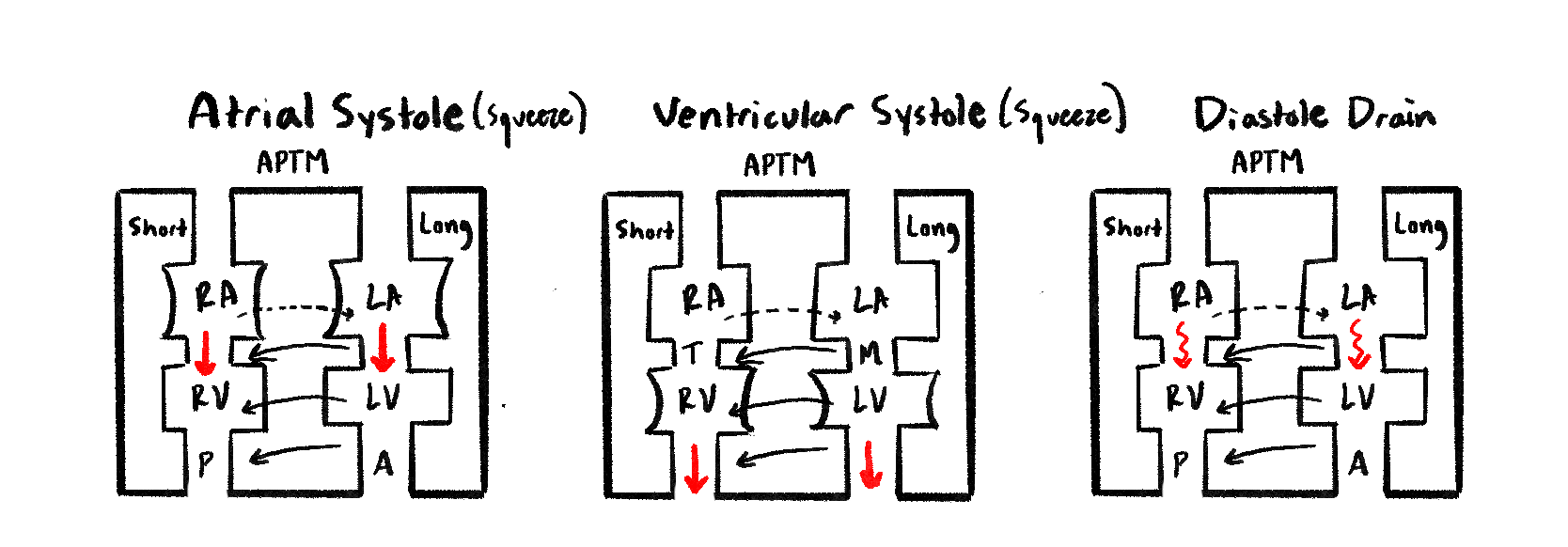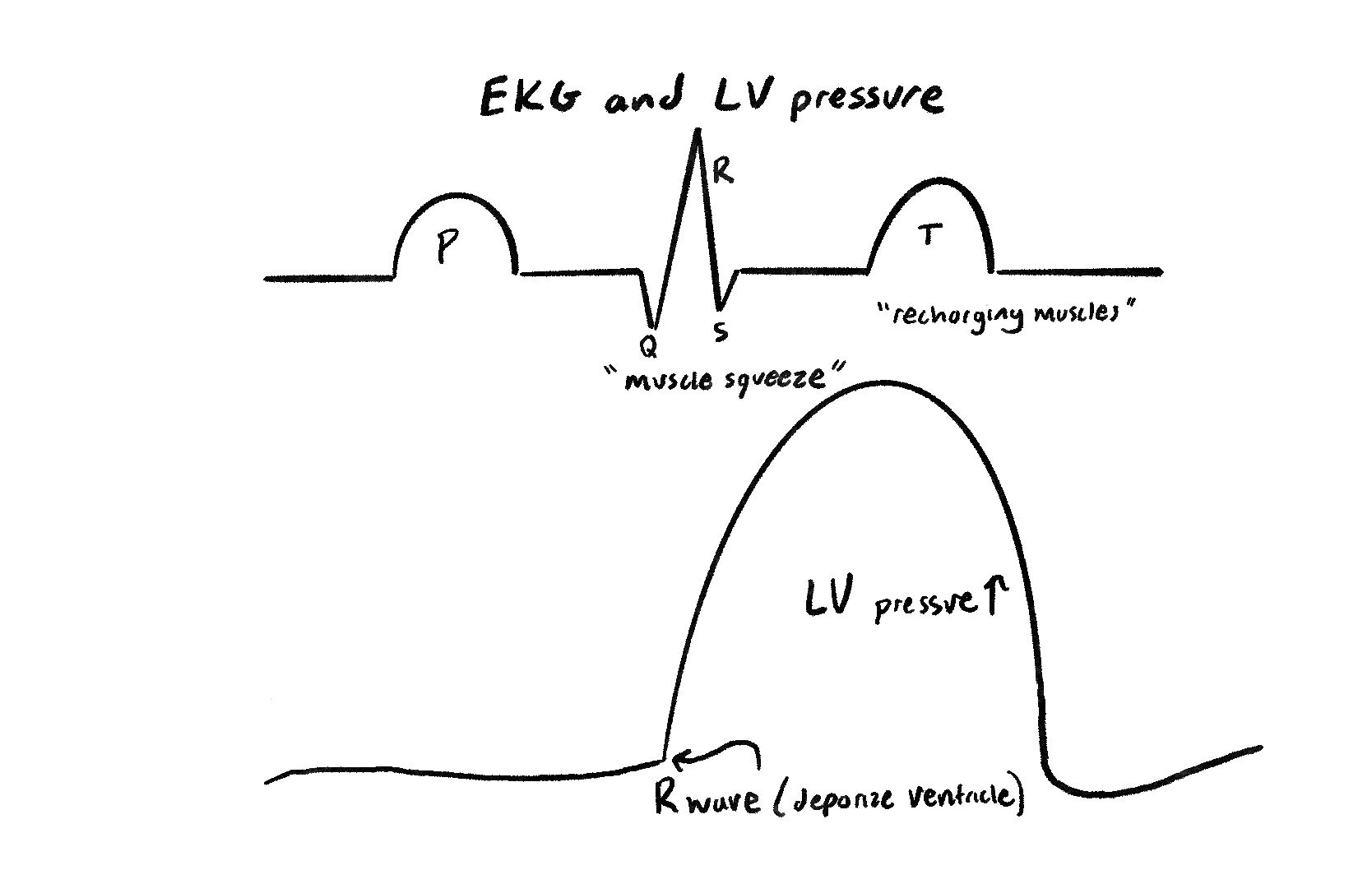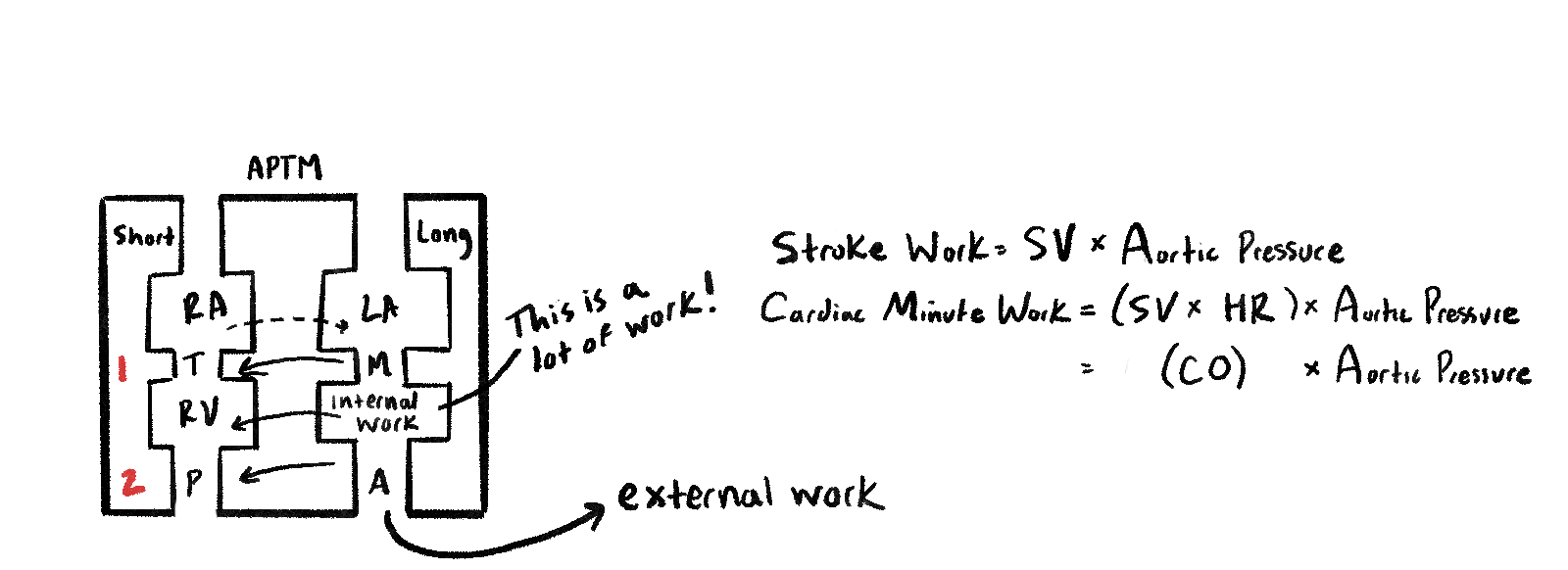The Cardiac Cycle & Mechanics
This is Cardiac Cycle and Cardiac Mechanics, starting off with the cardiac cycle.
Cardiac Output is the Stroke volume x heart rate. While the Stroke volume is End Diastole Volume - End Systolic Volume.
The timing of events in the heart is different between the left and the right. We can see that for contraction and closing, the right atrium contracts first on the right side compared to the Left atrium. However, for the last four, we see that the contraction or closing starts from left to right. Also, notice that the right side has shorter contraction and relaxation times than the left, which makes sense since the left ventricle has to pump a lot of blood to the rest of the body.
These are the three main phases of the cardiac cycle. It is important to know which valves are open or closed for each of these. This diagram only shows the direction of the blood, with a squiggly line indicating passive filling of the ventricles.
Once the cardiac muscles are depolarized, the muscles squeeze, increasing the pressure of the left ventricle, allowing blood to go into the aorta and body. This means the mitral valve must be closed, while the aortic valve is open.
The S1 sound is due to the Atrial valves, while the S2 sound is due to the great vessel valves. In between is when the heart muscles squeeze in systole. Notice that the S3 and S4 sounds are in the early and late diastole stage, and can indicate either systolic or diastolic heart failure.
The heart does a lot of work for us. To calculate stroke work, we simply take SV x Aortic pressure. If we want minute Cardiac work = that is CO x Aortic pressure (meaning we added a time component, which was the heart rate). Finally, it is important to distinguish the difference between internal and external work, where external is getting the fluid out, while internal involves that isometric contraction.
